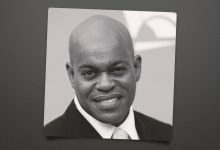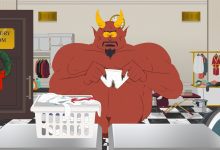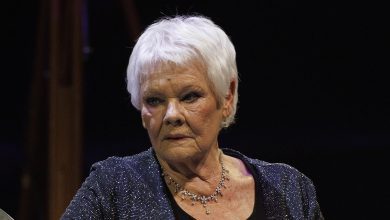‘Andor’ Season 2 Effects Team Did a Wild Number of Things For Real
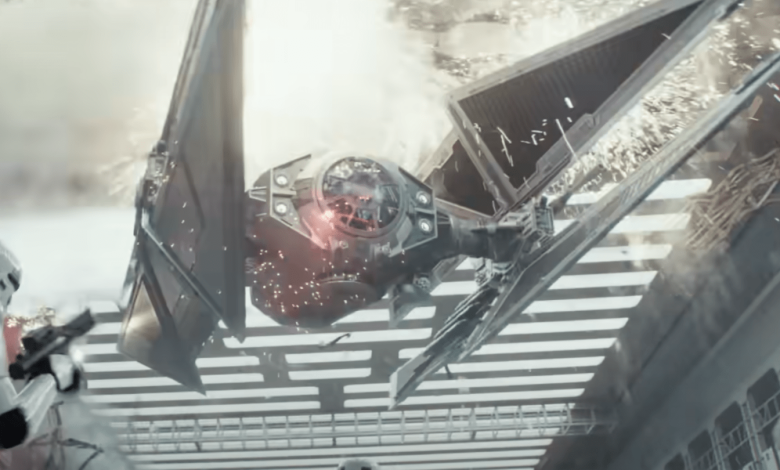
“Keep it grounded, keep it real” has always been Andor creator Tony Gilroy’s mandate to his effects team. For the acclaimed Disney+ Star Wars drama’s second season, Gilroy’s marching order meant building a massive “flying” TIE fighter from the ground up, figuring out a fresh way to film a Speeder Bike chase, tweaking the iconic Stormtrooper laser blasts, and solving countless creative challenges (there were 4,140 effects shots).
Below, Andor VFX supervisor Mohen Leo (who led the show’s digital effects team) and SFX Supervisor Luke Murphy (who tackled the show’s practical effects) discuss pulling off the season’s biggest visuals — as well as some of the smallest, which often turned out to be the trickiest.
What was the hardest effect to pull off in season two?
MOHEN LEO The most ambitious sequence was the TIE Avenger escape [in the season’s first episode]. That was in preparation for months — trying to figure out how to keep this sequence within the language of the show. I didn’t want to start the season off with something that was only computer generated. In conversations with Tony and with Luke, we talked about designing a sequence that starts with much more traditional filmmaking — with a practical set where we can use practical effects. And then, over the course of that sequence, transition into digital effects [as the fighter flies out of the hanger].
I’m assuming that TIE fighter was actually built? Because you see it on the ground in multiple settings and I thought it was really there.
LUKE MURPHY That thing was [actually built] and it sat on its wings. It was one of the most challenging builds we’ve ever done. It had a steel core and with materials used in aircraft — loads of aluminum composite panels, carbon fiber. We did everything we could to make that thing as strong as possible without having to rely on other structures that would then get painted out [with CG]. Actors could touch it and walk into it. Then we could literally lift that thing up with a crane and fly it around.
Back in the day, George Lucas famously used World War II dogfight footage for creating aerial scenes. What do you use now?
LEO I try to avoid referencing other movies. There’s almost no excuse not to look at real world references because you can find a fantastic reference for almost anything. There’s a shot in episode three when Cassian arrives with the TIE Avenger and he overtakes a troop transporter with the troops sitting in it. The idea for that shot came from looking on YouTube for Apache helicopter shots because we were saying, “Okay, [the TIE fighter] should behave a little bit like a mix of a jet and an Apache.” And I found that same shot of troops driving through the desert and out of the dust comes an Apache.
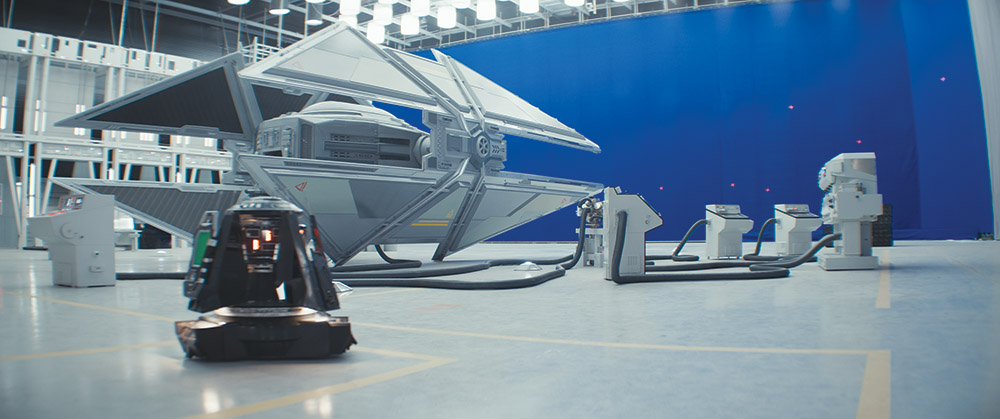
You also had a speeder bike scene, which has come a long way since Return of the Jedi.
LEO One of the things that always bugs me with Star Wars speeder bikes is you can tell that it’s someone on a blue screen with a wind machine, and then we put the background in. Luke ultimately came up with a fantastic solution with the stunts team for the speeder bike chase [through a wheat field] for the shots where you don’t see Brasso’s (Joplin Sibtain) face.
MURPHY The speeder stuff is always tricky. But we managed to get a speeder bike built onto the actual V-8 of a high-speed all-terrain vehicle, and then that was driven by a stunt driver. And I think what really helped there —
Oh, the crops!
MURPHY Yeah. The speed is supposed to be hundreds of miles an hour, right? That’s the reality in the Star Wars world. We were fortunate enough to get some really good shots at a very safe speed that look really dynamic, and then we just [digitally] tidy and clean stuff up. It feels believable because the stunt man is really gunning it and going for it. There was lot of paperwork involved in satisfying [the production’s] risk management assessors.
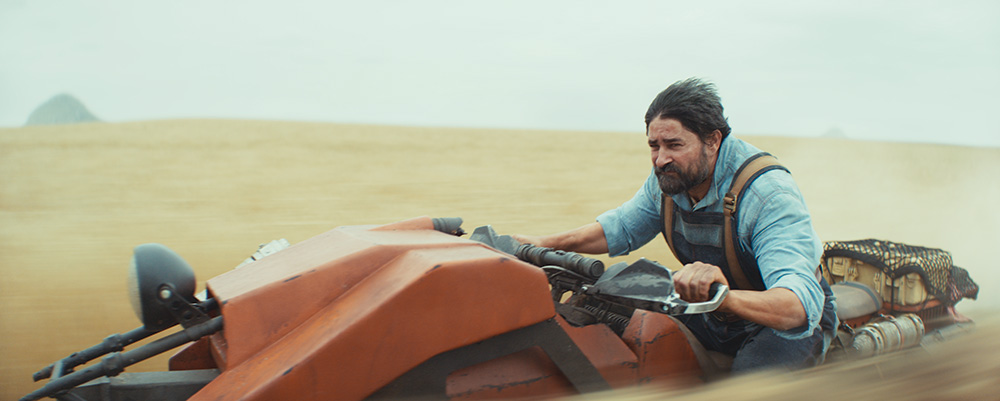
What shot or effect are you most proud of this season?
MURPHY One of the biggest challenges for us was we had to create a 17-ton electric snowplow for the heist sequence. When that vehicle comes down the street and crashes, it rips up the street for 80 feet. I was nervous that day. It was so cold that the breakaway material we were using in the street was sticking together. So at the last minute, we had to lift up 400 paving slabs and loosen all the material underneath.
See, that’s a shot I would just assume was digital.
LEO When you’re in visual effects and see there’s going to be a shot like that, you always think, “We’re probably going to have to make a whole lot of [CG changes].” We just had to paint away the camera rail — and that’s it. We didn’t augment that in any way. It looked fantastic just as it was.
MURPHY Another shot I was super happy with was when the grain comes out that silo and hits those stormtroopers. We set up a rig to do that and those guys got wiped out by 16 tons of grain.
The shots of K2SO in the cockpit, those are digital? My brain was telling me that has to be in effect, but he’s so very there. Also, there’s so much subtle expression, with the eyes and head movements.
LEO It was so important to have Alan back because he really embodied that character, and for his chemistry with Diego. Something we learned on Rogue One was you have to look at things that Alan might express with his face that you couldn’t transfer onto K2SO directly because his face doesn’t move — other than the eyes. So you find ways to transfer a facial expression into a little tilt of the head, or a movement of the eyes. Interestingly though, we did have a practical K2SO — like in the sequence where he’s [deactivated on the table], he’s practical. The moment he wakes up, he’s digital.
Is there anything from the long line of Star Wars video games that inspired any practical or visual effects the season?
LEO There is one Easter Egg, I think in episode four. There are a couple of guards that watching pod racing on a screen. The way it was initially written was that they were watching sports. But there’s not really football and stuff like that [in Star Wars]. We were like, “Can we do pod racing?” Then I went back trying to find aerial footage we could use for those shots. There’s a game called Star Wars Episode I: Racer from 1999 and it had a bunch of tracks in it. So it uses the track name from the game.
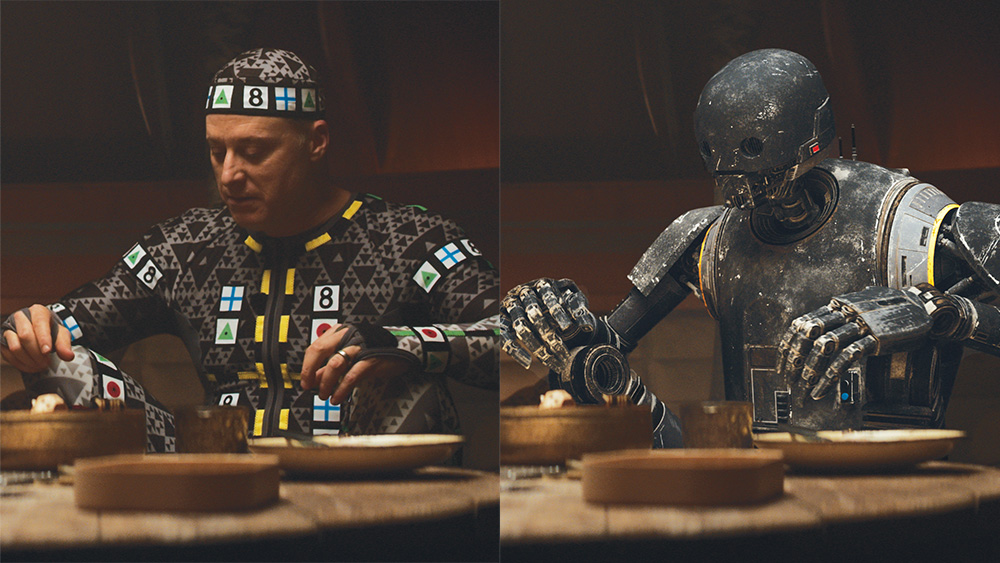
Let’s talk a moment about the evolution of the stormtroopers’ red laser blasts as seen during the hallway fight scene. I feel like back in the day the lasers looked more chunky, and now they’re thinner and more darting?
LEO If you look at the original trilogy, because [the lasers] were [painted] manually, there is a larger degree of inconsistency. [The lasers] are not always the same colors and not always the same width. So starting with Rogue One, [ILM Chief Creative Officer] John Knoll said, “Okay, let’s really think about what is the visual language of these carrying forward.” We started doing something that is thinner, and has a pointy diamond shape — like arrow tip — at the front.
Another thing John pointed out was that for the bigger laser shots — like from the TIE fighter, for example — is that when a green laser hits something, the first two frames of the explosion are green. When a red laser hits something, the first two frames of the explosion are red. There also needs to be always some wiggle room for the individual director to have a say. It’s the same with [a ship going into] hyperspace. It’s sometimes much more colorful. In Andor, it’s a bit muted because it’s a backdrop for intense character drama and you don’t want it to be distracting.
“Grounded and real” is probably something that a lot of showrunners walk in asking for. But it’s impressive Tony had the heft to do that. And then you guys, obviously, pulled it off.
LEO I think it’s not just heft. It was this understanding of restraint — from Tony and John Gilroy, his brother, the supervising editor, and even the directors. You didn’t want to be flashy when it was inappropriate for the story. So there were a number of big visual effects shots that we ultimately cut or toned down because they just felt like they didn’t belong.
That’s interesting. What’s an example of a flashy effect shot that was cut?
LEO Like there were a couple directors who said, “Let’s start with a big aerial establishing shot, and then cut into the location.” And Tony and John said, “We don’t need that. It’s all about the characters, let’s go straight into the drama.”
What looked really simple but in reality was very difficult?
MURPHY The scene where there’s a bubbling liquid poured [onto Luthen’s spy network communications panel to destroy it]. Really small stuff like that that you wouldn’t think was a big deal when you’re breaking down a script.
Another challenge was the elevator in the Senate building because it’s a cylinder with doors that open and then it all moves diagonally. It was compound curves everywhere and it felt like geometry was against us every step of the way. That was quite a challenging rig [to build]. And again, when you read in the script, “Mon steps out of an elevator,” you think, “Okay, fine.” Then you see the drawings. It’s always the stuff where you go, “Oh, that’s a just a two-minute job” that turns out to be a total monster.
Source: Hollywoodreporter
HiCelebNews online magazine publishes interesting content every day in the TV section of the entertainment category. Follow us to read the latest news.
Related Posts
- Sabrina Carpenter Summer? Singer Announces New Single ‘Manchild’ Ahead of Primavera Sound Set
- The 13 Commandments of Being a Background Actor
- How to Stream Tonight’s Premiere of ‘Next Gen NYC’ Online for Free
- Sean “Diddy” Combs Paid to Hide Cassie Beating Video Because He Feared Career Ruin, Witness Says
- Faster Pussycat Singer Taime Downe Opens Up About Late Fiancée’s “Heartbreaking” Death After She Went Overboard on 80s Cruise

